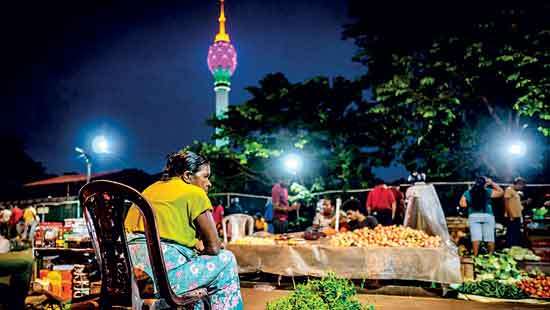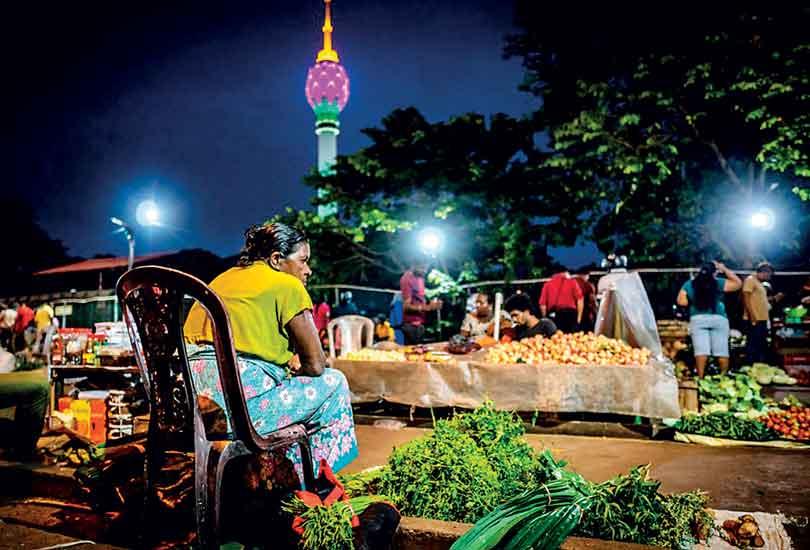Reply To:
Name - Reply Comment


Pettah’s night market, popularly known as ‘torch market’, where vendors light up the night with produce from across the island
PIC BY NAZLY AHMED
Sri Lanka’s inflation expanded by 6.5 percent year-on-year in January, as the prices rose across almost all categories from the one-off impact from the higher Value Added Tax and supply chain disruptions caused by the weather-related conditions.
On a monthly basis, as measured by the National Consumer Price Index, the prices rose by 3.0 percent in January, from 1.4 percent a month ago, reaching the highest increase recorded in more than a year.
The prices measured by the broader consumer price index followed the closely watched Colombo Consumer Price Index released three weeks ago, which also had a reading of 6.4 percent for January, from 4.0 percent in December.
The recent price pressures aren’t surprising, as the authorities were expecting the price gauges to reach in the neighbourhood of 7.0 percent in both January and February.
Meanwhile, the so-called core national prices, measured stripping out the food, energy and transport categories, which are considered as often volatile, rose by 2.2 percent in the 12 months to January, from 0.9 percent through December 2023.
The core prices measure the underlying price pressures in the economy and provide a better predictor of future inflation, thus watched more closely for policymaking.
Meanwhile, the food prices rose by 4.1 percent in January, sharply accelerating from 1.6 percent from December, while the prices measured on a monthly basis rose by 2.6 percent, decelerating from 3.6 percent in December.
The prices in almost all commodities in the food basket rose during January, from December levels, except in just four types.
Non-food inflation, which mainly captures the energy and services in the economy, logged an 8.5 percent increase, from 6.3 percent in December, on an annual basis. On a monthly basis too, the prices rose sharply by 3.2 percent, flipping from a decline of 0.3 percent in December.
Almost all categories in non-food inflation registered price increases in January over the December levels, led by the increase in housing rent, prices of petrol and L.P. gas.
As people are beginning to venture out more often for recreational activities, there is more pressure on non-food prices, as seen from the index, because what people spend at restaurants and hotels continues to rise.
Outlays on education had a considerable bearing on parents’ pocketbooks in recent times, as tuition fees had risen sharply in January.